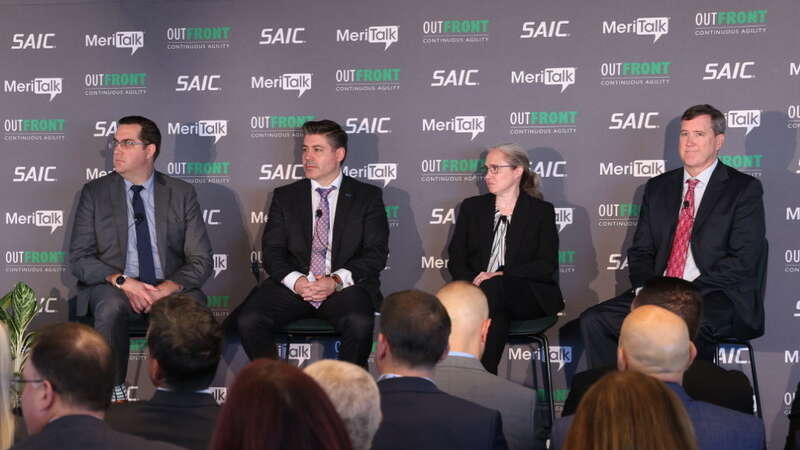
As the Department of Defense (DoD) is moving toward greater utilization of digital engineering, the agency is looking to increase collaboration within the DoD and across the Federal government through creation of the annual Federal Digital Engineering Forum (FEDDEF).
At the OutFront: Continuous Agility forum hosted by SAIC and MeriTalk in Arlington, Va., on Nov. 2, one DoD official explained that the department held the first-of-its-kind forum last week, with almost a dozen Federal agencies and over 180 digital engineering practitioners and leaders from across the Federal government.
“That was a great event to really talk about and drive towards some of the conversations and the challenges that we’re all experiencing in the Federal government,” said Daniel Hettema, the director of Digital Engineering, Modeling, and Simulation (DEM&S) at the Office of the Under Secretary of Defense for Research and Engineering. “There’s some key observations that we kind of extracted out of that.”
One observation, Hettema said, is that the Federal government faces challenges “with color of money.” For example, he said industry doesn’t run into the same challenges that the government experiences when it comes to funding profiles or getting new bosses every four to eight years.
“The realities of that from the Federal government really does affect us,” Hettema said. “So, there were some great conversations that we’ll be kind of spreading back out to the community and tactical gaps around multi-level security, around how do we get to the kind of data future that offices like the [DoD’s Chief Digital and Artificial Intelligence Office] are really pushing for data to be free and accessible.”
“This digital engineering adoption, the successes that we’re all trying to drive towards, only happens if we’re talking to one another, we’re coming to these events, and we’re learning from each other,” he added. “If we all stay in our silos of excellence, we’re going to miss opportunities to have these valuable conversations.”
Hettema said last week’s forum brought together all the services from DoD, along with many of the field activities in the DoD, such as the Missile Defense Agency (MDA) and the Defense Advanced Research Projects Agency (DARPA).
Additionally, he said FEDDEF had representation from the Department of Homeland Security (DHS), Federal Aviation Administration (FAA), and Department of Energy (DoE), along with some of DoE’s National Labs.
“One of the other major gaps that was identified really dove into just how are we resourcing various programs,” Hettema said. “Because of the nature of the event, we were able to have some honest conversations at a controlled, unclassified level. And so, we actually talked about how much money is being spent on the Federal government on major efforts like digital twins, on digital threats, and we were able to cross-compare that.”
Hettema explained that the agencies were able to identify areas where the Federal government could be spending more money, such as on the security or standardization aspect. Now, he said there’s an opportunity for attendees at that leadership level to go back to their agencies and find ways to resource those areas to improve digital engineering efforts.
Industry Experts Stress Importance of Collaboration
Collaboration is important not just across government, but also at the industry level. Chris Finlay, vice president of SAIC Digital Engineering Innovation, stressed that industry and the Federal government need to collaborate on digital engineering, because there’s “no reason to reinvent the wheel.”
“A lot of folks try to recreate things that have already been created, because they didn’t invent it themselves,” Finlay said.
However, he said a good way for Federal agencies to get started on their digital engineering journey is to look to their industry peers who have already made progress and seen success.
“I just want to let you all know that we share your challenges and your concerns,” Finlay said. “We’re shoulder to shoulder with you solving the [digital engineering] problems that are becoming harder and harder to solve.”
Mark Johnson, vice president of technology at IBM for the Federal market, said that his company is focused on working with DoD on digital engineering so that it can better serve the warfighter.
“To IBM, it’s all about the outcome. The result we want to deliver is for Dan and the warfighters,” Johnson said. “Ultimately, if we are not doing what the mission needs, whether it’s DoD, whether it’s Federal civilian … then we’re not doing the right thing.”
“The tools and the technology are easy compared to the people. And so, if we can make it easier – through better tools, through better collaboration like we have here – then it’ll be adopted, it’ll be effective,” he added.
